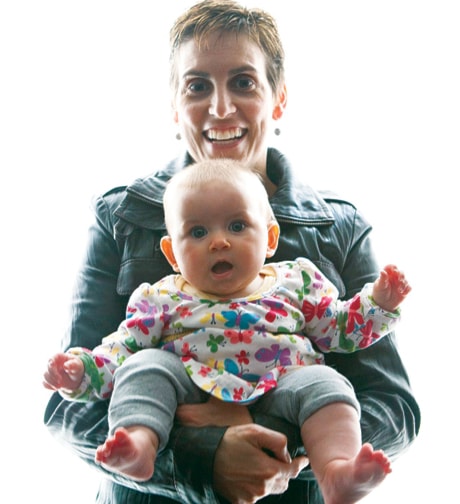OTTAWA — As a child, Jodie Cook hung back from the action on the soccer field picking dandelions and trapping grasshoppers rather than chasing the ball. Sports were never encouraged at home and fitness just didn’t interest her.
“I was the chubby girl in class, you know, 10 pounds heavier than the other kids,” she said. “It’s always been something I’ve dealt with.”
Cook is now 31, medically obese and pregnant with her first child. She worries her baby will grow up and repeat her experience: grappling with his weight and hanging back.
So she jumped at the opportunity to be part of the MOM trial — the Maternal Obesity Management study run by the Children’s Hospital of Eastern Ontario.
Amid growing evidence that obesity begins in the womb, CHEO’s Healthy Active Living and Obesity Research group is testing whether a nutrition and exercise program for overweight and obese pregnant women will influence the birth weight and growth patterns of their children.
“We know that pregnancy is a really important teachable moment,” said Dr. Kristi Adamo, the MOM trial’s lead researcher.
“Women will do all sorts of things in pregnancy that they would not do in their normal life.
“We’re hoping to capitalize on that period of time, where a woman is willing to change and motivated to change, not necessarily for her own health but certainly for the health of her child.”
Adamo said 40 per cent of women carry more weight during pregnancy than is considered healthy.
“If mom and dad are overweight or obese, their children tend to follow the same trajectory.”
The longer obesity persists, the harder it is to treat.
The CHEO team is intervening at the earliest possible stage to see if they can stop the cycle of generational obesity.
The team’s goal is for the women to stay within recommended pregnancy weight gain limits. For obese women, that means gaining no more than 20 pounds throughout the pregnancy.
If the moms achieve that goal, Adamo’s team believes their babies will be more likely to have normal birth weights. Once born at a healthy weight, the babies will then be more likely to follow normal growth patterns throughout childhood. That would reduce their risk of obesity later in life.
Twice a week since January, the moms-to-be have gathered for a one-hour fitness class designed specifically for pregnant women. The focus is on strengthening the pelvis and upper back.
The program changes as their bellies grow and some moves — such as knee-lifts — become challenging.
Cook, who is nearly eight months pregnant, found the workouts gruelling at first. Making time after a day’s work can be a challenge and the aches and pains that come with pregnancy make the sessions more daunting.
But she said she’s starting to feel a real difference in her body.
“I have better balance and I have more strength ... I’ve been able to basically maintain my weight now. So in essence I’m gaining baby weight, losing body fat.”
The study will monitor about 30 women through their pregnancies over the next few years and compare their results with 30 others in a control group.
On top of the fitness class, the participants are encouraged to walk for 30 minutes three times a week. They also see a dietitian to develop a healthy eating plan that is laden with fruits and vegetables, controlled portion sizes and limited calories.
Dr. Michelle Mottola has been studying pregnant women for two decades at the University of Western Ontario’s exercise and pregnancy lab. She helped develop Canada’s first exercise and fitness guide for expecting moms.
Mottola found the overweight and obese women she studied were giving birth to larger than average babies and she’s now looking closely at the babies in a separate study.
She said it’s important to make the womb a healthy environment, but the home has to be prepped as well.
“Without incorporating family into the whole idea of behaviour change these women will actually pick up the bad habits that they had prior to pregnancy.”
A second intervention after pregnancy — with more nutrition and exercise — is critical to long-term success, she said.
“Without that ... the women kind of fall off the bandwagon and pick up the bad habits that they had previously.”
Mottola’s team will monitor the babies in their trial until their first birthdays.
She said she would love to track the children for longer — especially looking at the critical period where they enter the school system — to see how successful their program really is. That depends on funding.
Cook’s baby and other MOM trial kids will be monitored until they are two years old.
The MOM trial fitness program ends after the babies are born. But Cook said she and her partner are determined to continue the healthy lifestyle even after bringing home their new baby boy.
